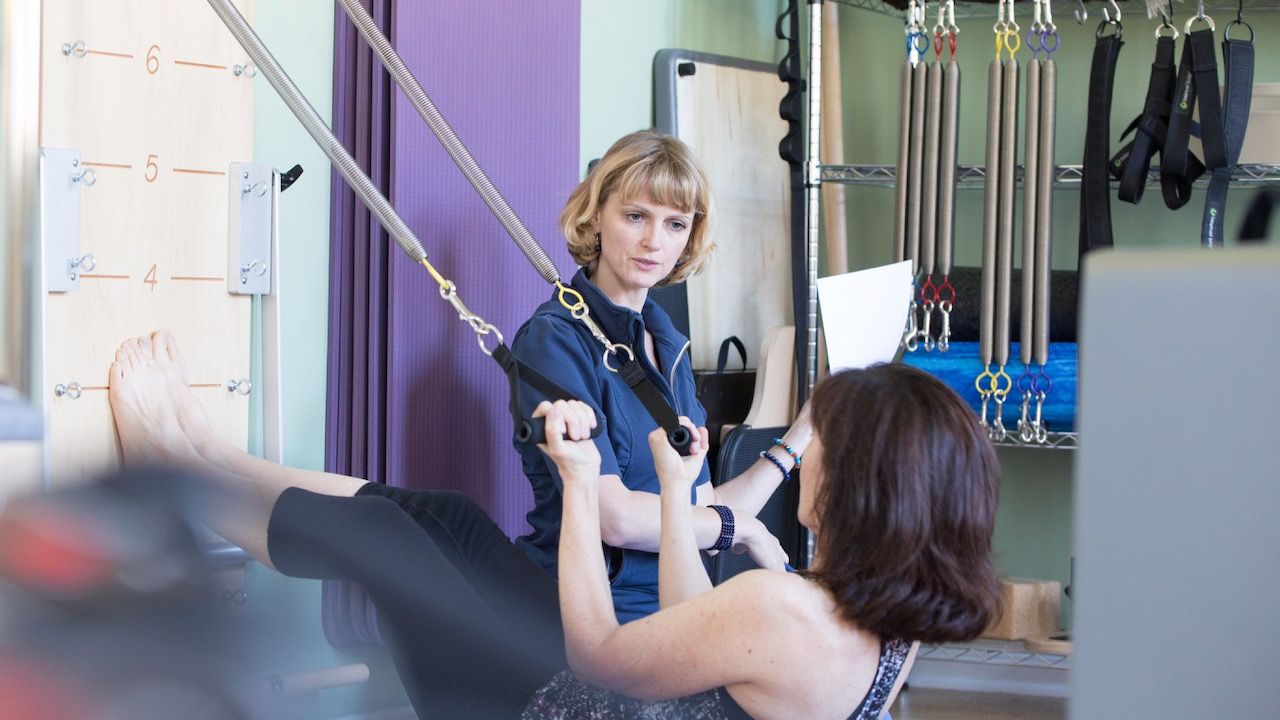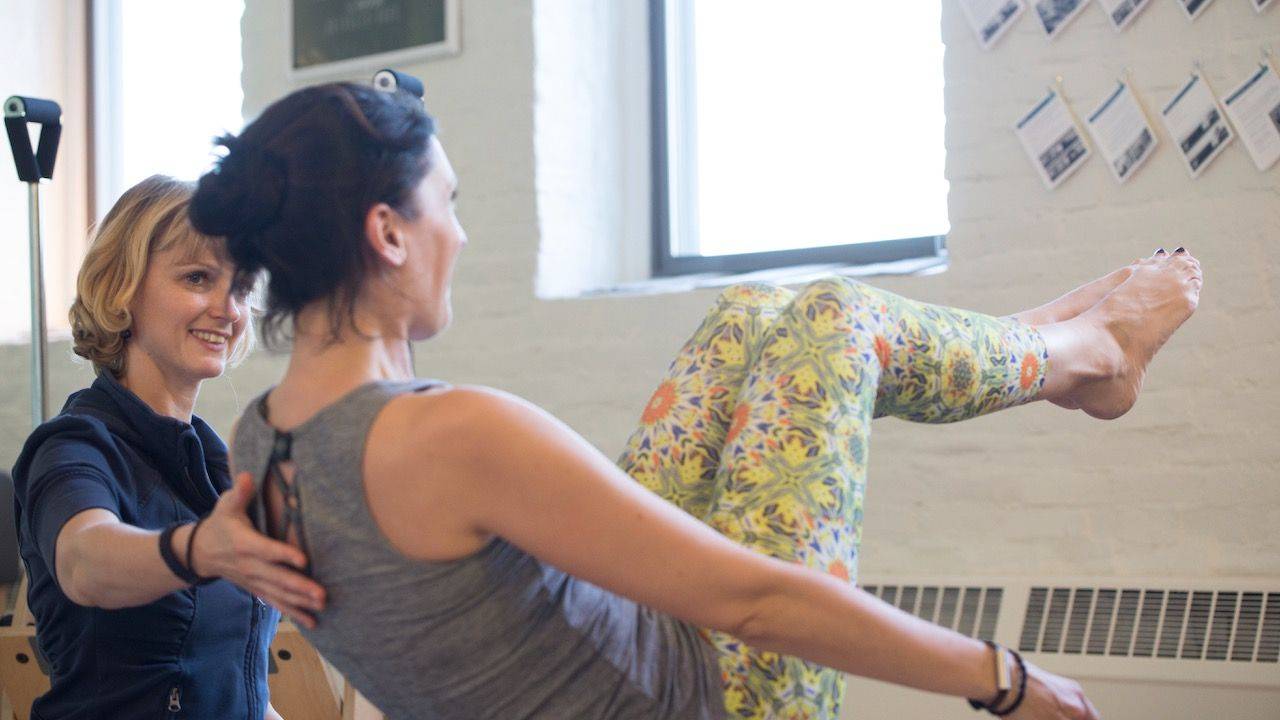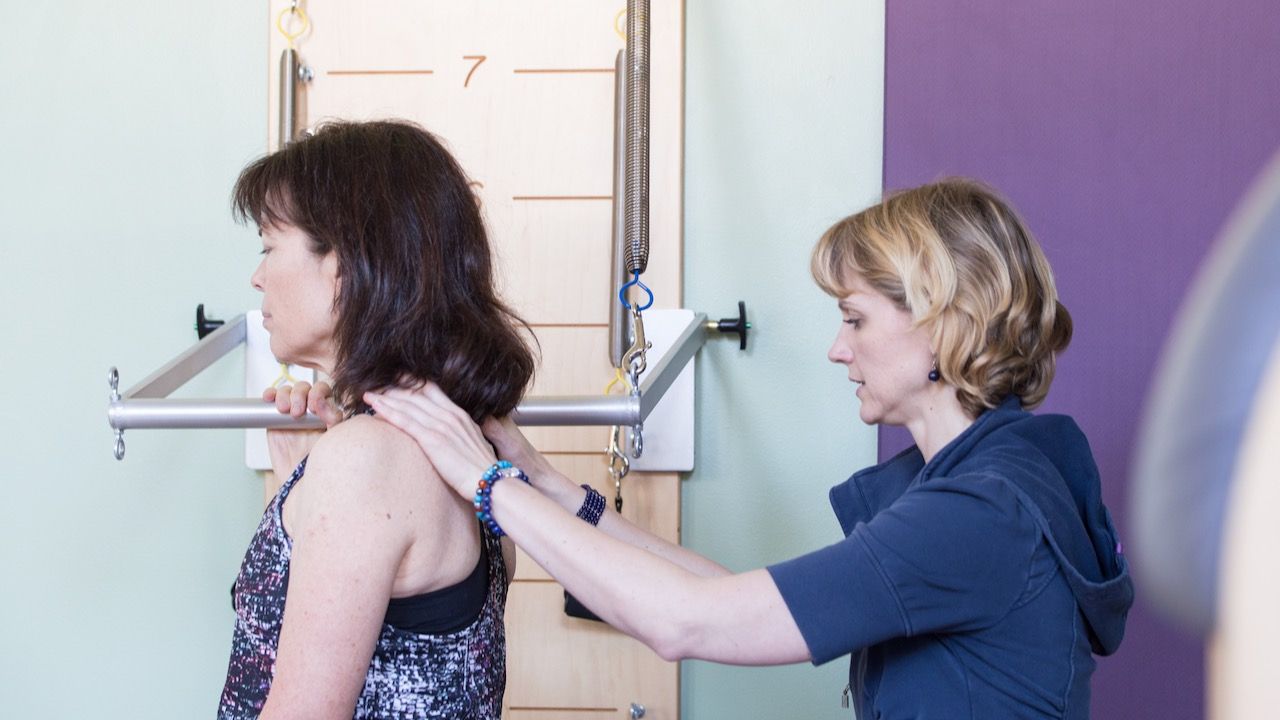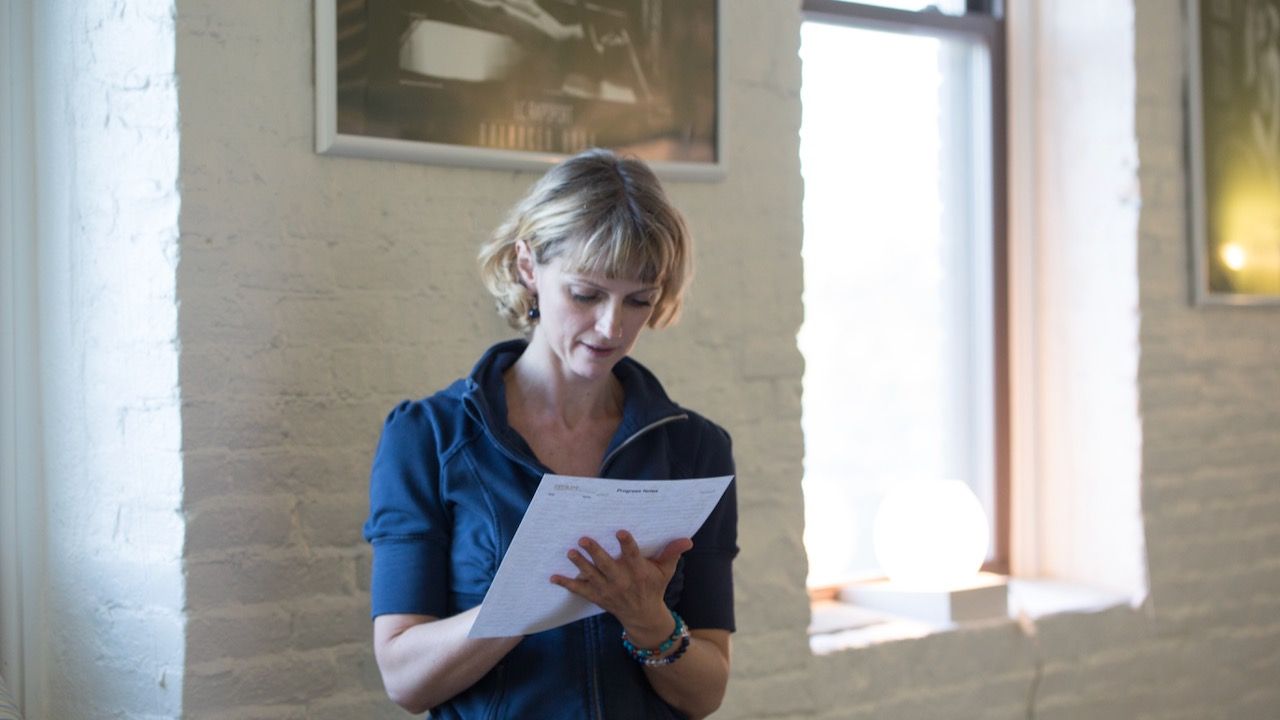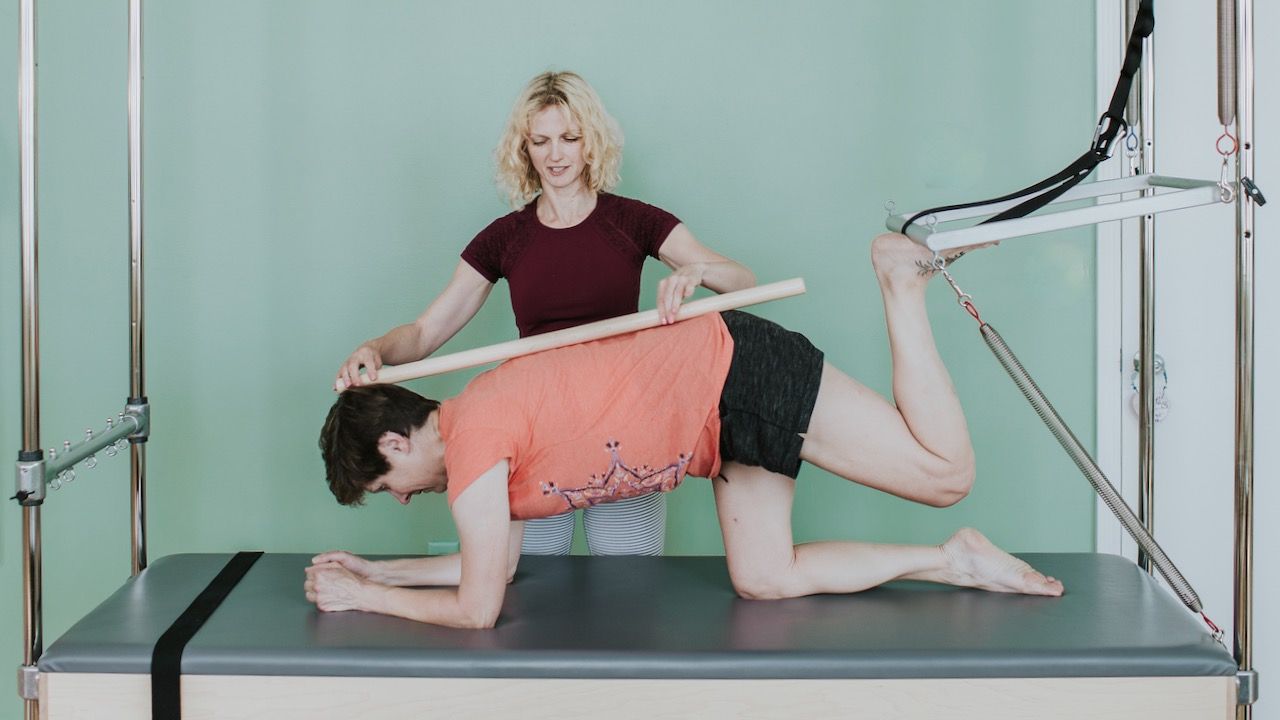
How Pilates Helps With Injuries and Pathologies of Special Populations
Mar 24, 2021This article first appeared on PilatesPal.com.
You might have read on the internet that Pilates can help with all sorts of ailments, from knee pain, low back pain, neck pain, and much more. I’ve seen pictures of amputees doing Pilates. Recently two students at my studio happened to have knee surgery at the same time, and they both came to practice at the studio with their braces on.
Pilates is absolutely magical. I observe on a daily basis how this powerful method heals, fixes, and mends what’s hurting. But - and that’s a big but - it depends very much on HOW to practice the method.
Related: Is Pilates a Workout?
I’m not talking about different styles or schools of Pilates. Classical or contemporary, Stott or Romana trained, we all have our Pilates skills. The biggest difference is in the format of your session or class. Are you taking private lessons or group classes?
In a group setting, your teacher - no matter how brilliant and highly trained she is - can NOT help you fix anything. The most she can do is make sure you don’t hurt yourself any further. Group classes are wonderful to strengthen what’s already working pretty well. Yes, you’ll be working hard, but you’ll be using the muscles that are already developed to some degree.
Group training makes you more of what you already are.
In private training, on the other hand, your teacher can help you find the muscles that are not developed. Maybe you’ve heard the recent talk of glute amnesia. Many of our butt muscles have forgotten how to engage. No wonder, we’re sitting on them all day long. (Sad face). Muscles that don’t know how to work (anymore), won’t just wake up one day and decide to work because you do Pilates, not even in an exercise that specifically targets these muscles.
Private training uncovers your full potential. It makes you what you can be.
I’m sure you’ve heard someone say - or said it yourself - “I didn’t even know I had muscles there.” With focus and precision, you can reclaim what’s been lost. But you need a trainer’s eyes on you. With the help of some questions such as “Where are you feeling this movement? Which muscles are working?” your Pilates teacher can figure out if the right muscles are engaging or if you’re triggering compensatory patterns.
If you’re struggling with any sort of pain or injury, I would highly recommend starting with private lessons. Once you are familiar enough with your exercises, join a Circuit class, Pilates By Design class, or other group class and/or practice independently.
In a group class, all your teacher can do for you is help you not to contribute to the problem. Do no harm, right? I’ve listed don’ts for the most common conditions and pathologies.
- Low bone density, such as osteopenia or osteoporosis: no spine flexion (rounding), no end-range lateral flexion or rotation (no extreme side bending or twisting)
- Disc herniation or bulge: no spine flexion.
- Spondylolisthesis: no spine extension (back bending), no side bending.
- Stenosis: no spine extension.
- Shoulder pathologies: limit movement to a pain- (and strain)-free range.
- Knee pathologies: avoid any movement that creates pain. Limit the range of motion of your knee to the pain-free zone; keep the movement small so as not to create pain. No pain, no gain? That’s not appropriate advice for you!
- Scoliosis: no spine movement; keep the spine neutral. Don’t correct leg length. Correction must happen from the spine to the extremities, not the other way round.
- Hip replacement: since there are different surgical options to replace a hip joint, inquire about your or your student’s particular surgical approach and ask which movements to avoid or be careful with. Post-op follow-ups usually include a good explanation of what movements are to be avoided.
- Knee replacement: avoid extreme knee flexion; avoid rotation or pivoting on the knee in standing, like can happen when you change direction quickly during walking or running).
- Pelvic floor disorders: avoid heavy lifting exercises.
I remember talking with a physical therapist about my work and he asked,
“Do you work around the problem or on the problem?”
#eyeopener
The approach described above would be considered working around the problem. You know, when you choose not to do a plank in your mat class because of your wrists.
If you want to work on the problem and actively choose exercises that will make the issue go away, then you will have to take private lessons. Only in a one-on-one environment will you get targeted exercises for your condition. When have you last (or ever) done specific wrist stretches or strengthening exercises in a group class? (If you did, huge kudos to your teacher!) Here is a list of things to work on and improve for the same pathologies listed above:
- Low bone density, such as osteopenia or osteoporosis: strengthen spinal muscles to prevent fractures, for instance with spine extension exercises.
- Disc herniation or bulge: learn awareness of neutral spine positioning and proper core activation.
- Spondylolisthesis: strengthen the spine and abdominals in neutral or a rounded (flexed) position.
- Stenosis: strengthen the spine and abdominals in neutral or a rounded (flexed) position; practice side bending with an elongated spine.
- Shoulder pathologies: work on small range exercises at a slow tempo to improve shoulder joint congruency.
- Knee pathologies: improve lower extremity alignment, such as ankle alignment, knee tracking, and hip range of motion. Use tools such as a soft ball, a magic circle, or a thera band to strengthen the outer or inner legs.
- Scoliosis: learn to breathe into the hollow part of your body, and activate the protruding part. These corrections will not be symmetrical and require a tremendous amount of practice, body awareness, and concentration. Use the breath and focus on the individual body parts to create symmetry from the inside out.
- Hip replacement: Bit by bit improve hip range of motion and strengthen the hip musculature all around the hips with controlled movement.
- Knee replacement: strengthen lower extremities all around. Strengthen the core and improve hip range of motion where it’s limited.
- Pelvic floor disorders: if severe, lie on an inclined position with the pelvis higher than the head. Strengthening transversus abdominis and adductors will help strengthen the pelvic floor; practice squats with the focus on the sit bones moving apart and together.
You won’t have to take private lessons forever. Once you know enough exercises, you can substitute one of the ones that are good for you for one of the ones you shouldn’t do in class.
A final consideration when choosing the best strategy to overcome a physical limitation is your teacher’s experience. Pilates education happens in stages. The acquisition of detailed knowledge about various pathologies takes years and even decades. There is so much to learn. It’s also a teacher’s personal choice. Not all Pilates teachers are interested in rehabilitation, some are more comfortable working with high-level athletes.
Pilates teacher training programs teach anatomy and physiology. They teach the Pilates repertoire on all pieces of equipment, how to sequence a class or session, and some modifications. But Pilates instructors are movement teachers, not physical therapists. The way you move has a huge effect on how you feel, that’s why Pilates can have incredibly healing results.
Ask the teacher you’re considering working with how much experience they have with your type of condition. Ask if they know someone who specializes in it, but don’t worry if you’re unable to find someone. Ask your teacher to reach out to your surgeon, physical therapist, or chiropractor.
Any good health and wellness practitioner will be happy to collaborate. We all care about our patients and clients. They’ll learn something useful, increase their professional network, and you can rest assured that you’re in good hands.
Inside the Pilates Encyclopedia membership, we have a whole chapter called “Pilates Protocols” in which we list appropriate exercises for each of these problems.
Get support with your day-to-day teaching challenges
Ready to Teach Pilates with Clarity and Confidence?
Sign up to receive my weekly email newsletter. It's jam-packed with Pilates articles, videos, exercise tutorials and teaching tips.
Only super valuable stuff here. No spam ever. Unsubscribe any time.









